
Eldred Gregory Peck was an American actor and one of the most popular film stars from the 1940s to the 1970s. In 1999, the American Film Institute named Peck the 12th-greatest male star of Classic Hollywood Cinema.
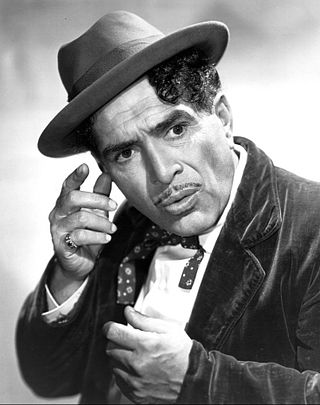
Joseph Patrick Carrol Naish was an American actor. He appeared in over 200 films during the Golden Age of Hollywood.

Body and Soul is a 1947 American film noir sports drama directed by Robert Rossen and starring John Garfield, Lilli Palmer, Hazel Brooks, Anne Revere, and William Conrad. The screenplay by Abraham Polonsky is partly based on the 1939 film Golden Boy. With cinematography by James Wong Howe, the film is considered by some to be one of the best films about boxing. It is also a cautionary tale about the lure of money—and how it can derail even a strong common man in his pursuit of success. The film uses the song Body and Soul for the main musical theme and underscoring throughout.

The Beast with Five Fingers is a 1946 American mystery horror film directed by Robert Florey from a screenplay by Curt Siodmak, based on a short story written by W. F. Harvey and first published in 1919 in The New Decameron. The film stars Robert Alda, Victor Francen, Andrea King, and Peter Lorre. The film's score was composed by Max Steiner.
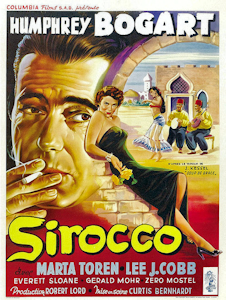
Sirocco is a 1951 American film noir directed by Curtis Bernhardt and starring Humphrey Bogart.

One Way Street is a 1950 American film noir crime film directed by Hugo Fregonese and starring James Mason, Märta Torén and Dan Duryea. The crime film takes place mainly in Mexico.

Sitting Bull is a 1954 American-Mexican Eastmancolor Western film directed by Sidney Salkow and René Cardona that was filmed in Mexico in CinemaScope. In a greatly fictionalised form, it depicts the war between Sitting Bull and the American forces, leading up to the Battle of the Little Bighorn and Custer's Last Stand. It was the first independent production to be filmed in the CinemaScope process. Featuring sympathetic portrayals of Sitting Bull and Crazy Horse, The New York Times called it a "Crazy Horse opera".

Bad Bascomb is a 1946 American western film starring Wallace Beery and Margaret O'Brien. The movie was directed by S. Sylvan Simon. The supporting cast features Marjorie Main, J. Carrol Naish, Frances Rafferty, Marshall Thompson and Henry O'Neill.

Surrender is a 1931 American pre-Code drama film directed by William K. Howard, written by S.N. Behrman, and starring Warner Baxter, Leila Hyams, Ralph Bellamy, C. Aubrey Smith, and Alexander Kirkland. It is based on Axelle, a novel by Pierre Benoit. The film is widely considered to have exerted an enormous influence upon Jean Renoir's subsequent Grand Illusion.
Gung Ho! is a 1943 American war film directed by Ray Enright and starring Randolph Scott. The story is based somewhat on the real-life World War II Makin Island raid led by Lieutenant Colonel Evans Carlson's 2nd Marine Raider Battalion.

That Night in Rio is a 1941 Technicolor American musical comedy film directed by Irving Cummings and starring Alice Faye, Don Ameche and Carmen Miranda. It is one of several film adaptations of the 1934 play The Red Cat by Rudolf Lothar and Hans Adler. Others are Folies Bergère de Paris (1935) and On the Riviera (1951).
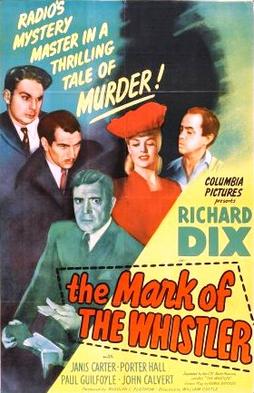
The Mark of the Whistler, is a 1944 American mystery film noir based on the radio drama The Whistler. Directed by William Castle, the production features Richard Dix, Porter Hall and Janis Carter. It is the second of Columbia Pictures' eight "Whistler" films produced in the 1940s, all but the last starring Dix.
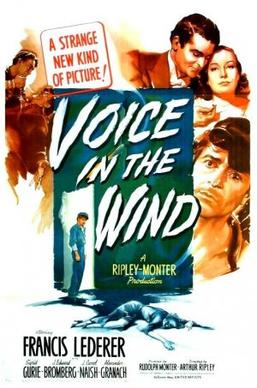
Voice in the Wind is a 1944 American film noir directed by Arthur Ripley and written by Friedrich Torberg, based on a story written by Arthur Ripley. The drama features Francis Lederer, Sigrid Gurie and J. Edward Bromberg.
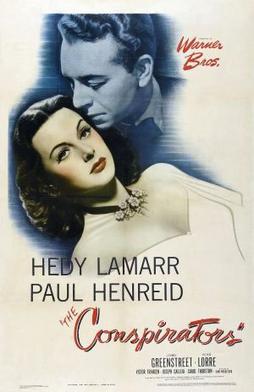
The Conspirators is a 1944 American film noir, World War II, drama, spy, and thriller film directed by Jean Negulesco. It stars Hedy Lamarr and Paul Henreid, features Sydney Greenstreet and Peter Lorre in supporting roles, and has a cameo of Aurora Miranda singing a Fado. The Conspirators reunites several performers who appeared in Casablanca (1942).
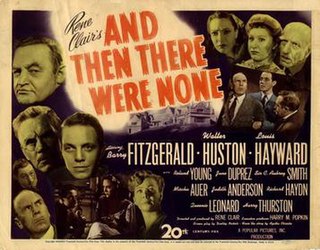
And Then There Were None is a 1945 film adaptation of Agatha Christie's 1939 mystery novel of the same name, directed by René Clair. It was released in the United Kingdom as Ten Little Indians, in keeping with the third United Kingdom title of Christie's novel. The film was produced by 20th Century Fox and due to the lapsed copyright, it is now in the public domain. The film has been remastered multiple times and is freely available online.
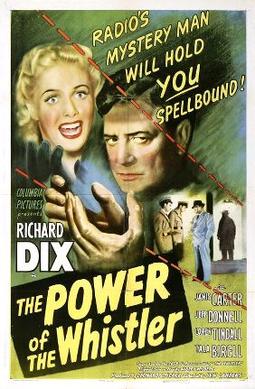
The Power of the Whistler is a 1945 film noir thriller film based on the radio drama The Whistler. Directed by Lew Landers, the production features Richard Dix. It is the third of Columbia Pictures' eight "Whistler" films produced in the 1940s, seven starring Dix.
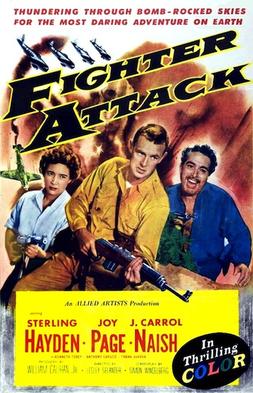
Fighter Attack is a 1953 American World War II film directed by Lesley Selander. The film stars Sterling Hayden, Joy Page and J. Carrol Naish. It reunited Hayden and Selander, who had worked together on Flat Top in 1952. The film is set in Nazi-occupied Italy and involves a U.S. fighter pilot's last sortie, and the help he receives from Italian partisans in an effort to complete his mission after he is shot down in enemy territory.

Black Hand is a 1950 American film noir directed by Richard Thorpe and starring Gene Kelly as an Italian immigrant fighting against the Black Hand extortion racket in New York City in the first decade of the 20th century.
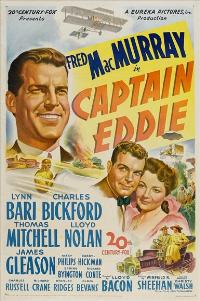
Captain Eddie is a 1945 American drama film directed by Lloyd Bacon, based on Seven Were Saved by "Eddie" Rickenbacker and Lt. James Whittaker's We Thought We Heard the Angels Sing. The film stars Fred MacMurray, Lynn Bari and Charles Bickford. Captain Eddie is a "biopic" of Rickenbacker, from his experiences as a flying ace during World War I to his later involvement as a pioneering figure in civil aviation, and his iconic status as a business leader who was often at odds with labour unions and the government.
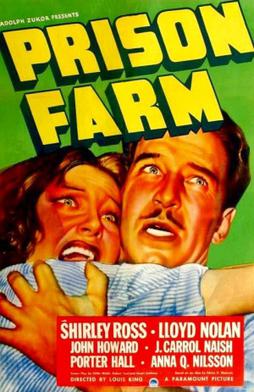
Prison Farm is a 1938 American crime film directed by Louis King, and written by Eddie Welch, Robert Yost and Stuart Anthony. It stars Shirley Ross, Lloyd Nolan, John Howard, J. Carrol Naish, Porter Hall, Esther Dale and May Boley. It was William Holden’s film debut. The film was released on June 17, 1938.



















